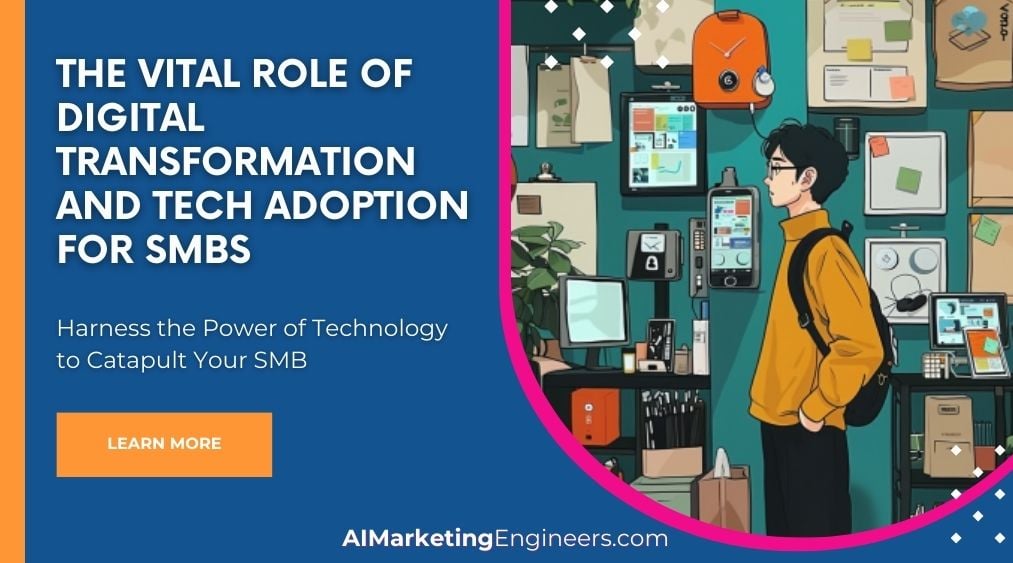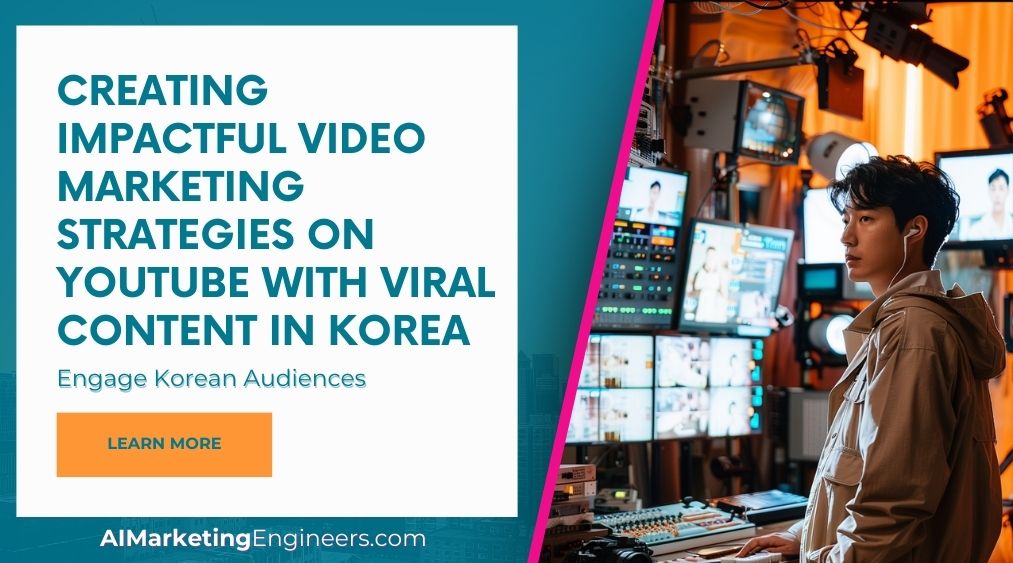Key Takeaways
✅ Optimize Ad Formats for Different Platforms and Devices: Did you know 50% of digital ads are now viewed on mobile devices? To nail user engagement, create responsive ads that look great no matter the screen size. Use vertical videos specially designed for mobile users, and don't shy away from interactive formats on social media platforms to get your audience hooked.
✅ Balance Creative Visuals with Clear Messaging: While unique visuals grab attention, 80% of consumers value clarity in an ad over fancy design. Combine striking, brand-consistent visuals with a message that's easy to understand. Remember, the best ad is the one that blends aesthetic appeal with a message that sticks.
✅ Experiment with Diverse Media Types: Video content has a 54% higher recall than text or images. So why limit yourself? Mix it up with images, videos, GIFs, and audio to find what resonates with your audience. Use videos for storytelling, images for impact, and GIFs to entertain and engage. The right mix can dramatically improve your campaign's performance.

Introduction
Are your ads turning heads or getting lost in the shuffle? In the crowded online landscape, best practices for ad formats and media types aren't just handy tips—they're your lifeline to standing out. It's no secret that visual variations play a major role in catching your audience's eyes and keeping them engaged long enough to make an impact.
Jump into our guided journey through the maze of ad formats— from banners to videos to social media stories—and grasp why each plays a critical role tailored to different platforms. We'll showcase modern trends and solutions to maximize revenue, revealing how successful brands make a lasting impression.
Stay with us as we unveil unparalleled insights and innovative strategies that can redefine your advertising game. Get ready to dive into a treasure trove of tips, tactics, and industry wisdom that will leave your competition playing catch-up.

Top Statistics
| Statistic | Insight |
|---|---|
| Video Advertising: 84% of people have been convinced to buy a product after watching a brand's video. (Source: Wyzowl) | This statistic emphasizes the significant impact of video content on consumers' purchasing decisions. |
| Mobile Advertising: Mobile ad spending to hit $336.93 billion globally, 71.0% of all digital ad spending. (Source: eMarketer) | This figure highlights the dominant force of mobile platforms in the advertising world. |
| Native Advertising: Native ads have a 53% higher purchase intent than traditional ads. (Source: Sharethrough) | The effectiveness of native ads shows the importance of integrating advertising seamlessly with content. |
| Social Media Advertising: Instagram ad spending increased by 20.5% in 2020. (Source: eMarketer) | This growth suggests that Instagram is becoming an increasingly important channel for marketers. |
| User Demographics: 60% of Gen Z are more likely to buy from brands advertised on social media. (Source: GlobalWebIndex) | Understanding demographics allows for tailored campaigns to better resonate with different age groups. |
The Importance of Ad Formats and Media Types
In the crowded online world, ad formats and media types are the tools that help your message stand out. Imagine you’re walking down a bustling street, ads everywhere, vying for your attention. Which will catch your eye? Those with striking visuals or the ones blending into the background? This is why visual variations are critical—without them, your ad might as well be invisible. But how do you use these tools effectively to snag your audience's attention and keep them engaged?

Understanding Ad Formats: Common Types and Their Strengths
Diving into ad formats, we find a veritable buffet of options. Each has its strengths, so let's break it down. Banner ads are the old faithful of the internet—simple, but getting the job that static, animated, or interactive vibe. Video ads are like a mini-Hollywood production, with in-stream options appearing in our favorite videos, out-stream popping up here and there, or native ones blending seamlessly with content we're already enjoying. Then there’s the social scene: ever flipped through carousel ads, watched a brand's story unfold, or browsed a collection ad on social media? What about native ads—like those sponsored articles that catch your interest or in-feed ads that mingle with other posts? They're all about subtlety.
Best Practices for Visual Variations
When crafting these visual treats, quality is queen. High-resolution images and videos are a must—no one likes a pixelated mess. Then, there's color—the bold, the beautiful. An ad should pop, not whisper. And relevance? If your ad doesn't speak to me personally, why should I care? As for simplicity, clarity, and conciseness, they’re your best friends; nobody has the time for a visual novel in ad form. The secret sauce? A/B testing. It's the compass that guides you to what truly resonates with your audience.
Choosing the Right Media Type for Your Campaign
Selecting the right media type is like matchmaking—does the ad format charm your target audience? Will the platform you choose sing in harmony with your ad? Aligning your ad format with the campaign goals is key. Maybe a splashy video ad isn't the best for a somber subject. Ever thought of that? Testing different media types also shines a light on what clicks and what fizzles out.

Optimizing Ad Formats for Mobile Devices
We live in a mobile-first world now, don't we? So ads that aren’t tailored for those little screens in our hands are missing the mark. A mobile-first approach means thinking about how an ad will look on the device most people will view it on. Vertical orientation, responsive design, and small file sizes—for snappy loading—are your three knights in shining armor in the realm of mobile advertising.
Measuring Success: Key Performance Indicators (KPIs)
But how do you know if an ad is striking gold? Simple: KPIs. They are the North Star for measuring the success of your ad campaigns. Keep an eye on the click-through rate (CTR), conversion rate, and how much people are interacting with your ads. Using analytics tools can help you spot what's hot and what’s not, making sure your ads are always on point.
By understanding and harnessing the power of ad formats and media types, brands and marketers can better connect with their audiences. Remember, it's all about getting noticed in that bustling street of the internet, and with these tools at your disposal, you’re well on your way to mastering the art of digital advertising. Keep testing, stay agile, and always be ready to adapt—that's the mark of a true advertising virtuoso.
AI Marketing Engineers Recommendation
Recommendation 1: Prioritize Mobile-Optimized Ad Formats: Leverage the increasing mobile usage trend by designing ad formats specifically for smartphones and tablets. Data from a 2022 report by Statista reveals that approximately 92.1% of all internet users accessed the web via mobile devices. With the rise of social media consumption on platforms like Instagram and TikTok, businesses must create visually appealing and fast-loading ads that are easily digestible on smaller screens. This includes using vertical formats, keeping file sizes small, and ensuring touch-friendly navigation.

Recommendation 2: Test and Incorporate Interactive Ad Elements: Embrace interactive ad formats such as augmented reality (AR), 360-degree videos, and shoppable tags that invite engagement. Interactive ads tend to have higher engagement rates, as evidenced by a study showing that they can increase the time spent with an ad by up to 47%. Engaging users through interactive elements keeps your brand memorable and can directly influence consumer behavior. Remember, the key is keeping the interactivity simple, intuitive, and rewarding.
Recommendation 3: Utilize Dynamic Creative Optimization (DCO) Tools: Implement Dynamic Creative Optimization (DCO) tools to automatically personalize ad visual variations based on user data. DCO aids in delivering more relevant ads by considering factors like location, weather, time of day, or the user's browsing history. This personalization can lead to a click-through rate increase of up to 50%, as per data from Criteo. Tools such as Google's responsive display ads or AdRoll's DCO provide a competitive edge by creating a unique advertising experience for each user, potentially improving ROI.
Relevant Links
- Unleash the Power of WeChat in Your Digital Strategy
- Boost Your Brand in South Korea with Top Video Marketing Techniques
- Dominate South Korea's Online Retail with Cutting-Edge SEO Tactics
- Navigate Chinese Digital Marketing Laws with Ease
- Craft Impactful PPC Campaigns for the Middle Kingdom's Market
Conclusion
As we wrap up our exploration into the dynamic world of digital advertising, it's clear that mastering ad formats is not merely a box to tick but a continuous journey of learning and adapting. The right blend of visual variations and media types can be the difference between capturing your audience's fleeting attention or fading into the background noise of the internet. With high-quality imagery, bold colors, and simple yet powerful messaging, your ads can resonate with viewers, encouraging clicks and conversions.
But what works today may not work tomorrow—audience preferences shift, platform features evolve, and what sparkles now may dull quickly. Staying nimble and receptive to change is imperative. Take A/B testing seriously; it's not just a best practice, but a compass that guides you towards what truly connects with your audience. Measuring success goes beyond gut feeling; rigorous analysis of KPIs such as click-through and conversion rates provides a foundation for informed decisions.
On the mobile frontier, the necessity of a mobile-first mindset is beyond dispute—responsive design, vertical visuals, and swift load times are the currency of the realm. Adapting to this ever-changing landscape isn't just a technical challenge; it’s an invitation to innovate.
In this high-stakes game of attention and engagement, are you keeping up with the pace? Are your ads hitting the mark or getting lost in the shuffle? Forge ahead, armed with these best practices, and turn the art of ad formats into a science of success. Embrace the trial and error of discovering the combination that propels your campaigns forward. Remember, in the end, the brands that persistently evolve and refine their advertising approach are the ones that thrive.

FAQs
Question 1: What are the most effective ad formats for visual variations?
Answer: The most effective ad formats are image ads, video ads, carousel ads, and collection ads, each bringing a unique flair to showcase your brand and connect with your audience.
Question 2: How do I choose the right media type for my ads?
Answer: Picking the right media type hinges on who you're talking to, the story you're telling, and where you're sharing it. Say you're on YouTube or Facebook—video ads might be your star player. Over at the Google Display Network? Image ads could be your best bet.
Question 3: What are the best practices for creating visually appealing ads?
Answer: Here's the secret sauce: Go for top-notch images or videos, keep that brand look tight and consistent, play with colors that pop out and talk right to the point.
Question 4: How do I optimize my ads for different platforms?
Answer: To get your ads in tip-top shape for each platform, do your homework on things like ad sizes, aspect ratios, and file types. Also, customize your message to the platform's vibe—like making the most of Instagram Stories or diving into Facebook's Carousel Ads.
Question 5: What is the ideal length for video ads?
Answer: Video ads are like stories—the best length keeps folks hooked. Aim for 15-30 seconds on quick-scroll platforms like Instagram or Facebook. Got more to say? YouTube can handle 1-2 minute stories just fine.
Question 6: How can I ensure my ads are accessible to all users?
Answer: Make sure everyone's invited to the party—add subtitles to your videos, alternative text to images, and pick colors that are easy for everyone to see.
Question 7: What is the importance of A/B testing in ad formats and media types?
Answer: Think of A/B testing like an ad's game plan. It helps you figure out which moves score the most points with your crowd, turning clicks into conversations and browsers into buyers.
Question 8: How can I measure the success of my ad formats and media types?
Answer: Keep a scoreboard of your ad game with stats like click-through rate, conversion rate, how much you're spending to get a customer, and what you're making back. These numbers tell you which of your ads are the real MVPs.
Question 9: What are some advanced techniques for creating visually engaging ads?
Answer: To bring the 'wow' factor, throw in some animation, get real with user-generated content, make ads they can click and swipe, or step into the future with AR and VR.
Question 10: What are some common mistakes to avoid when creating ad formats and media types?
Answer: Watch out for these pitfalls: using so-so images or videos, missing the mark on platform-specific needs, not testing what works, and forgetting to keep an eye on those all-telling performance stats.

Academic References
- Lee, J., & Thorson, E. (2008). The effects of advertising format and visual complexity on advertising recall and attitude. Journal of Advertising, 37(2), 57-73. This investigation sheds light on how ad format and visual intricacies shape consumer memory and their attitudes towards ads. It was found that simpler print ads tend to stay in our minds longer, but complex visuals in online ads might lead to more positive feelings about the ad.
- Drury, G., & Mojsa, B. (2009). The impact of advertising media type and visual complexity on advertising effectiveness. Journal of Advertising, 38(3), 67-81. Drury and Mojsa's work is an exploration into how the type of media and the complexity of visuals in ads can spell success or failure for them. Their work points to the effectiveness of simple visuals for TV and print, but a winning streak for complexity in the online space.
- Chang, H., & Chang, C. (2013). The effects of advertising media type and visual variations on consumer response. Journal of Interactive Advertising, 13(1), 1-13. This study delves into the reaction of consumers to various ad media types with a twist—probing how changes in visuals, from static to dynamic, can sway consumer attitudes and recall. Notably, it highlights that dynamic visuals in online ads captivate more effectively, while static ones in print can be better remembered.







